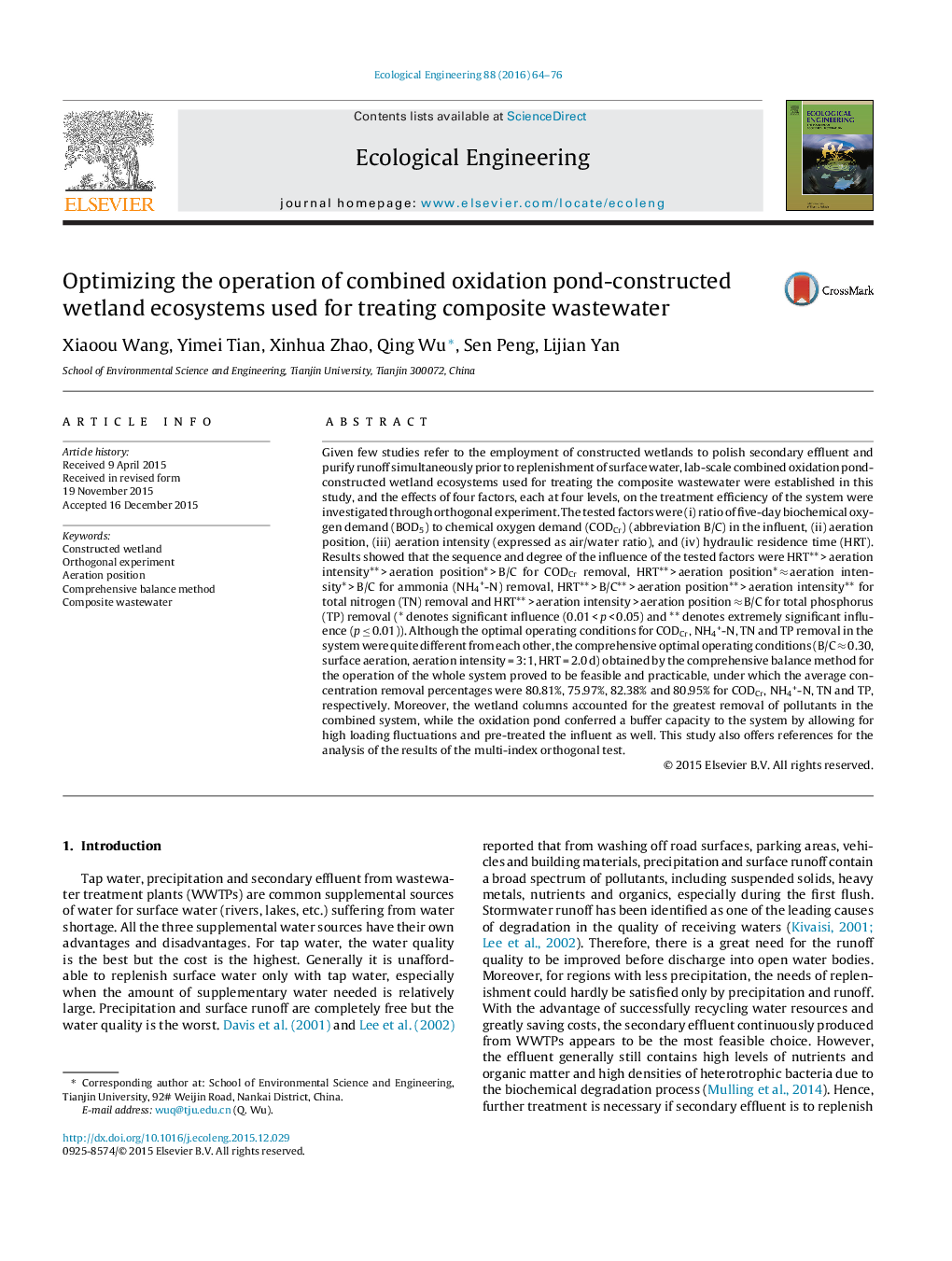| Article ID | Journal | Published Year | Pages | File Type |
|---|---|---|---|---|
| 6301535 | Ecological Engineering | 2016 | 13 Pages |
Abstract
Given few studies refer to the employment of constructed wetlands to polish secondary effluent and purify runoff simultaneously prior to replenishment of surface water, lab-scale combined oxidation pond-constructed wetland ecosystems used for treating the composite wastewater were established in this study, and the effects of four factors, each at four levels, on the treatment efficiency of the system were investigated through orthogonal experiment. The tested factors were (i) ratio of five-day biochemical oxygen demand (BOD5) to chemical oxygen demand (CODCr) (abbreviation B/C) in the influent, (ii) aeration position, (iii) aeration intensity (expressed as air/water ratio), and (iv) hydraulic residence time (HRT). Results showed that the sequence and degree of the influence of the tested factors were HRT** > aeration intensity** > aeration position* > B/C for CODCr removal, HRT** > aeration position* â aeration intensity* > B/C for ammonia (NH4+-N) removal, HRT** > B/C** > aeration position** > aeration intensity** for total nitrogen (TN) removal and HRT** > aeration intensity > aeration position â B/C for total phosphorus (TP) removal (* denotes significant influence (0.01 < p < 0.05) and ** denotes extremely significant influence (p â¤Â 0.01)). Although the optimal operating conditions for CODCr, NH4+-N, TN and TP removal in the system were quite different from each other, the comprehensive optimal operating conditions (B/C â 0.30, surface aeration, aeration intensity = 3:1, HRT = 2.0 d) obtained by the comprehensive balance method for the operation of the whole system proved to be feasible and practicable, under which the average concentration removal percentages were 80.81%, 75.97%, 82.38% and 80.95% for CODCr, NH4+-N, TN and TP, respectively. Moreover, the wetland columns accounted for the greatest removal of pollutants in the combined system, while the oxidation pond conferred a buffer capacity to the system by allowing for high loading fluctuations and pre-treated the influent as well. This study also offers references for the analysis of the results of the multi-index orthogonal test.
Related Topics
Life Sciences
Agricultural and Biological Sciences
Ecology, Evolution, Behavior and Systematics
Authors
Xiaoou Wang, Yimei Tian, Xinhua Zhao, Qing Wu, Sen Peng, Lijian Yan,
